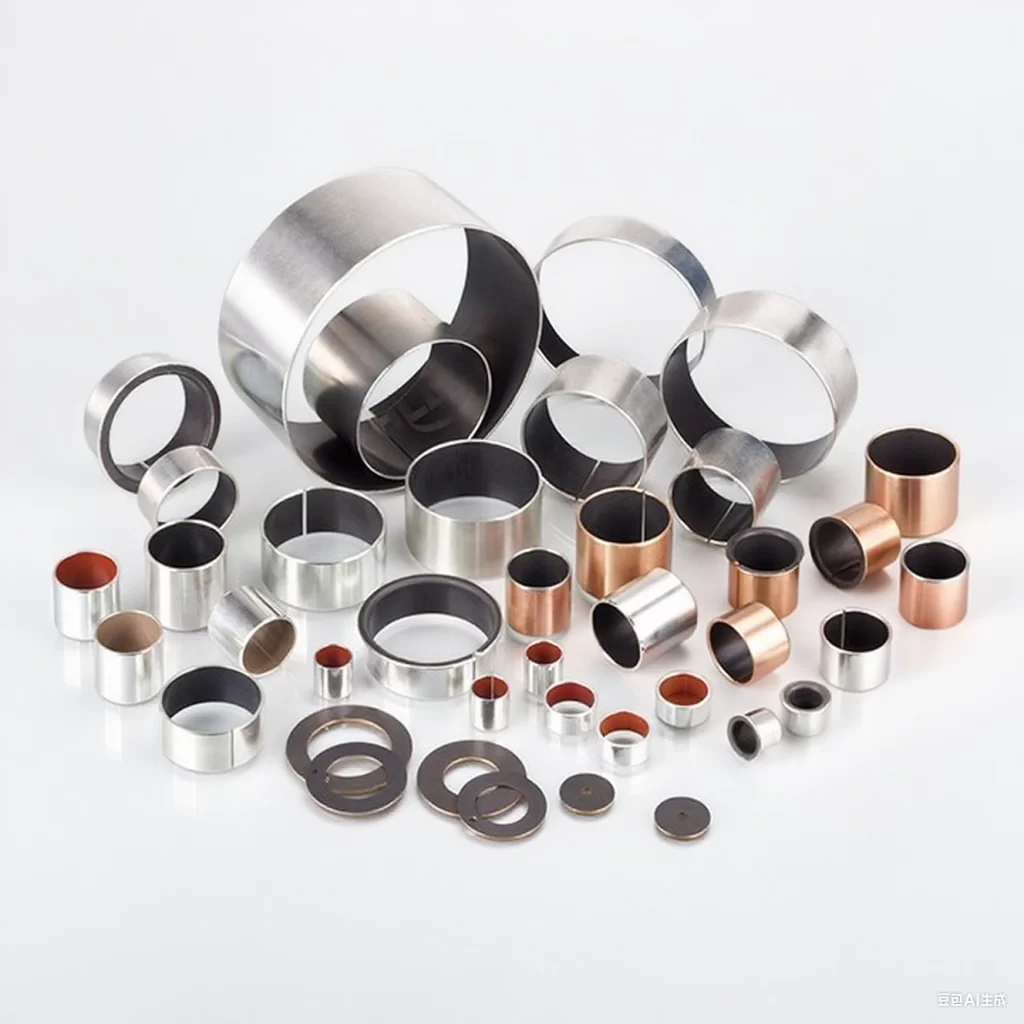
Home » Self lubricating bushings » What is a self-lubricating bushing?
What is a Self-Lubricating Bushing? oil free bearings
A self-lubricating bushing is a bushing that has a lubrication material built into it to automatically release lubricant during operation, reducing the friction and wear, without having to always lubricate from the outside.
Table of Contents
A self-lubricating bushing oil free bearings is designed to improve the efficiency of machinery without having to lubricate it all the time externally. They use special materials to create the solid mechanical part with self-lubricating capabilities.
In this article, we’ll look more into how they work, what are the benefits, where do you use them, and a few different self-lubricating bushings oil free bearings FAQ’s you may have to help you see the value in using these awesome bushings in your equipment.

1. How Does a Self-lubricating Bushings Work?
A self-lubricating bushing oil free bearings works by releasing a thin film of lubricant from the substance the bushing is made of between it and the moving shaft to keep it lubricated.


2. What Are Self-lubricating Bushings better Than Traditional Budhingd?
There are several benefits of self-lubricating bushings oil free bearings over regular bushings that still need external lubrication.
- Maintenance-Free: You do not have to grease them all the time. This saves time and labor.
- Extended Life: They last longer because they don’t wear out.
- Earth-Friendly: There are fewer oils used which means there is less chance for the lubricant to escape. This is eco-friendly.
- Cost-Effective: In the long run, you will save money on maintenance and on not having to replace them as often.

3. What Are the Different Types of Self-lubricating Bushings?
- DU/SF-1 bushings with a layer of PTFE on the outside to lower the friction and improve wear resistance, which are very good.
- DX/SF-2 bushings. These bushings are designed for low-speed and higher-load situations with a thicker layer of lubricant.
- Bimetallic bushings which are steel backed with thin layer of bronze or a sintered alloy, which are excellent for heavy-duty applications.
- Graphite embedded bushings which use graphite as the lubricant, these also work well but cost more.
- Solid Special Bronze Bushing, Wrapped Bronze Bushing, Steel Bushing, Powder Metallurgy etc.
Each of these may be your solution depending on your requirements under heat or load.


4. How Long Do Self-Lubricating Bushings Last?
The most significant difference in how bushings and bearings work is the type of friction they use:
- Bushings use sliding friction where the shaft comes in contact with the bushing material. Typically you lubricate the bushing with oil or use a self-lubricating oil free material to keep the bushing from wearing out, getting killed, and sucking up all your energy in the form of heat.
- Bearings use rolling friction. The rolling pieces (balls or rollers) never come into direct contact with the shaft or the housing. This type of friction decreases the resistance between the two parts which, in turn, lets a bearing work more efficiently and faster than a bushing.

5. How Are Bushings and Bearings Installed Differently?

6. Are Self-Lubricating Bushings Right for Your Business?
Self-lubricating bushings oil free bearings. If your equipment operates in a demanding environment or is maintenance-related, self-lubricating bushings are a real game-changer. They are perfect for different kinds of industries, like
● Automotive: Decreasing the amount of maintenance in high-performance vehicles.
● Construction: Holding up better in real-world construction-type situations, heavy stuff.
● Agriculture: In your dusty, dirty, rocky, rough environments, they’ll work better.
If you make the switch to self-lubricating bushings, not only will things become simpler for you, but your equipment will run a lot more efficiently.


7. Conclusion


